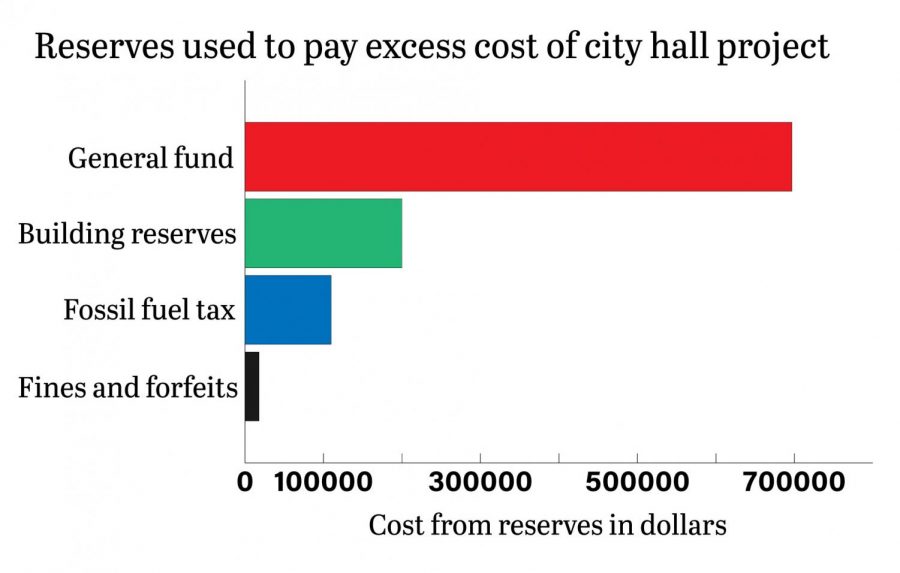Pullman city hall relocation project $1 million over budget
Excess costs covered by government building reserves, natural gas tax
LUKE HUDSON | DAILY EVERGREEN ILLUSTRATION
The Pullman City council used reserve funds from the general fund, building reserves, fossil fuel taxes and fines and forfeits to help pay for the excess cost of relocating city hall.
August 21, 2019
The Pullman City Council used about $1 million from reserves to cover unforeseen costs on the city hall relocation project.
Mike Urban, Pullman city finance and administrative services director, said one cause of this discrepancy is attributed to bids on the project being higher than the estimated cost.
The original engineer’s estimate for the project was about $5.98 million, but the lowest bid was about $7.11 million, a 19 percent increase, according to a Public Works memo submitted to the city council on Aug. 13.
Urban said the project was delayed by one year and that contributed to the bid being so much higher than the original estimate since construction costs tend to go up each year.
Contractors account for prevailing wages in their estimates. These are government-mandated figures that are paid to workers in a particular area and are often a union wage.
Between when the bond was approved and when the estimate was submitted, the prevailing wage for plumbers increased from $62 per hour to $81 per hour, about a 30 percent increase, according to a memo from Design West Architects to the city.
Urban said he worked closely with various city departments to determine what money could be used while having the least noticeable effect on daily services and longterm projects.
“If you’re the average consumer in Pullman, you won’t notice a change,” Urban said.
Money to cover the excess costs came from the general fund, government building reserves, natural gas tax, and fines and forfeits, according to the memorandum.
Also included in the memorandum were recommendations about which features of the new city hall building could be cut to save money. The plan for the roof of both buildings was changed from standing seam metal roofs to a composition shingle roofs, which saved about $501,000, according to the memorandum.
Eileen Macoll, Pullman city councilmember, said she was proud of the features that were kept in the plan. Some of these included two elevators, an entryway to the senior center and new kitchen equipment.
She said the current city hall building is not in good condition and the city council outgrew the space. The building is made of brick and that makes it difficult to rearrange office space.
Macoll said it is important for the city to take care of employees by improving conditions for people who work at city hall.
Brandon Chapman, Pullman city councilmember, said that the council should have asked for more money with the bond to account for potential overflow costs. He said he was not happy the city had to dip into reserves to fund the project.
Chapman said he agrees with Macoll that keeping in features like the elevators and kitchen equipment is important because those serve the community more than a fancy council chamber does.
He said that the focus of the council’s and city’s resources should be devoted to what people use the most.
























Bidding Consultants • Aug 22, 2019 at 11:43 am
It’s really good article. It gonna very effective and helpful.I like it very much keep it up.